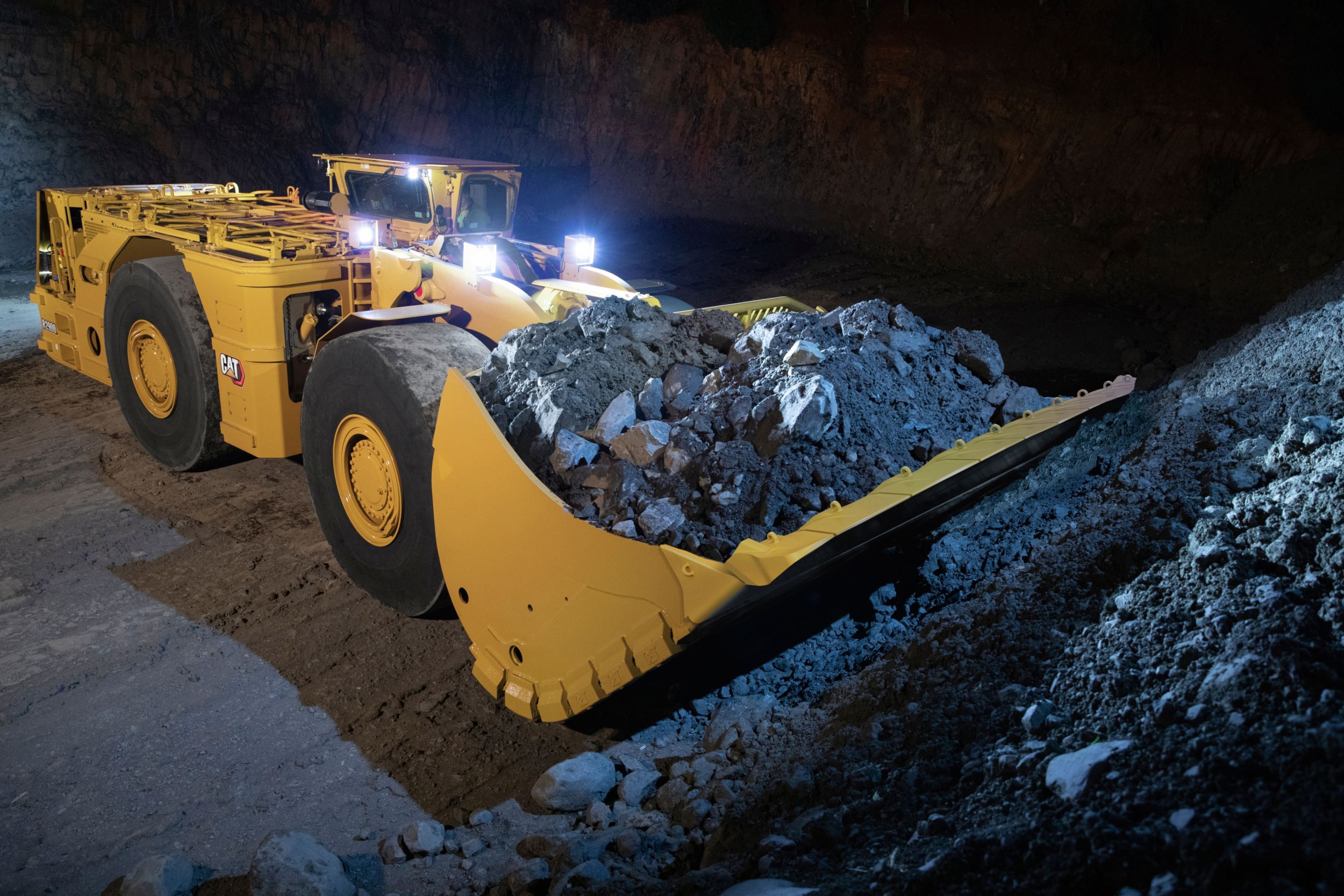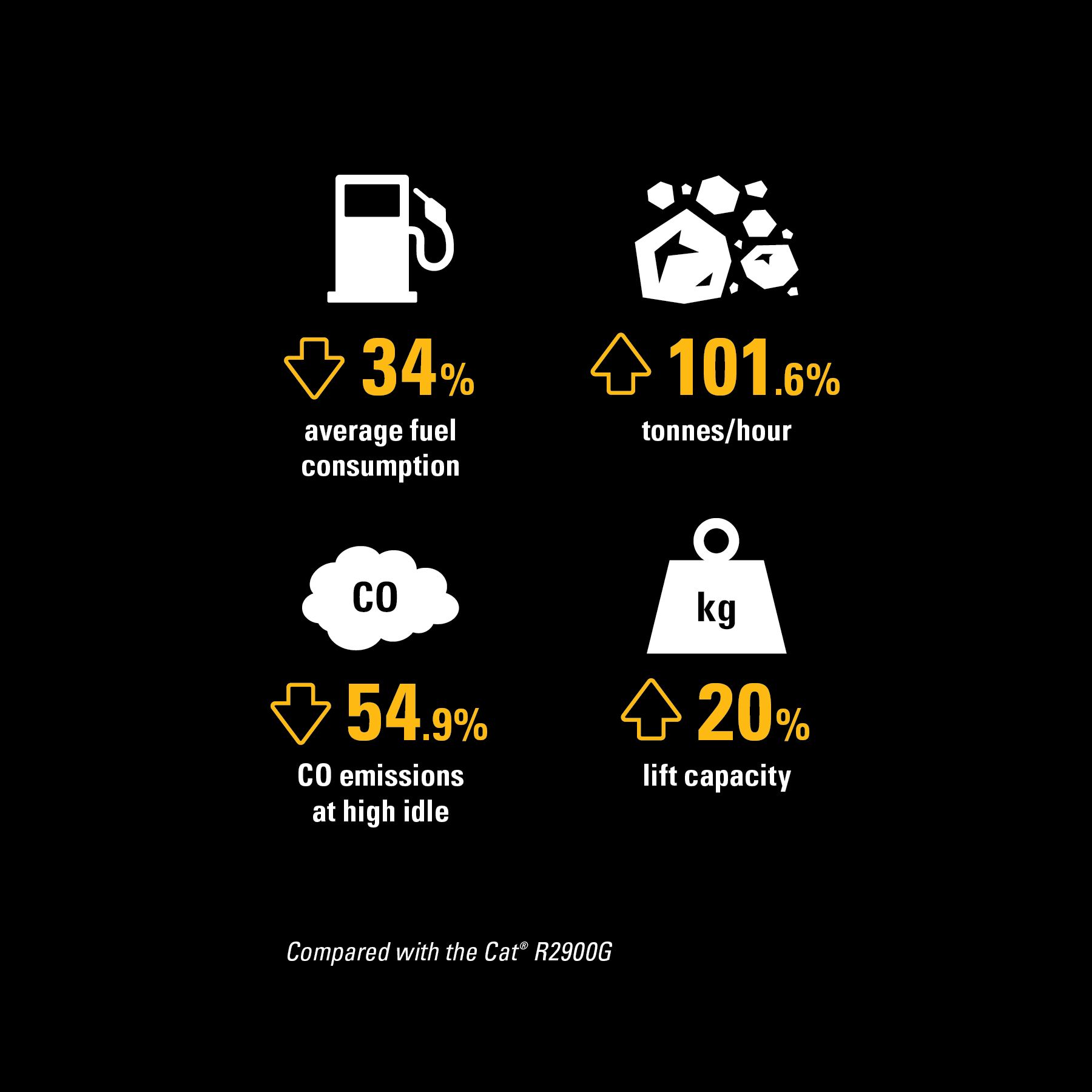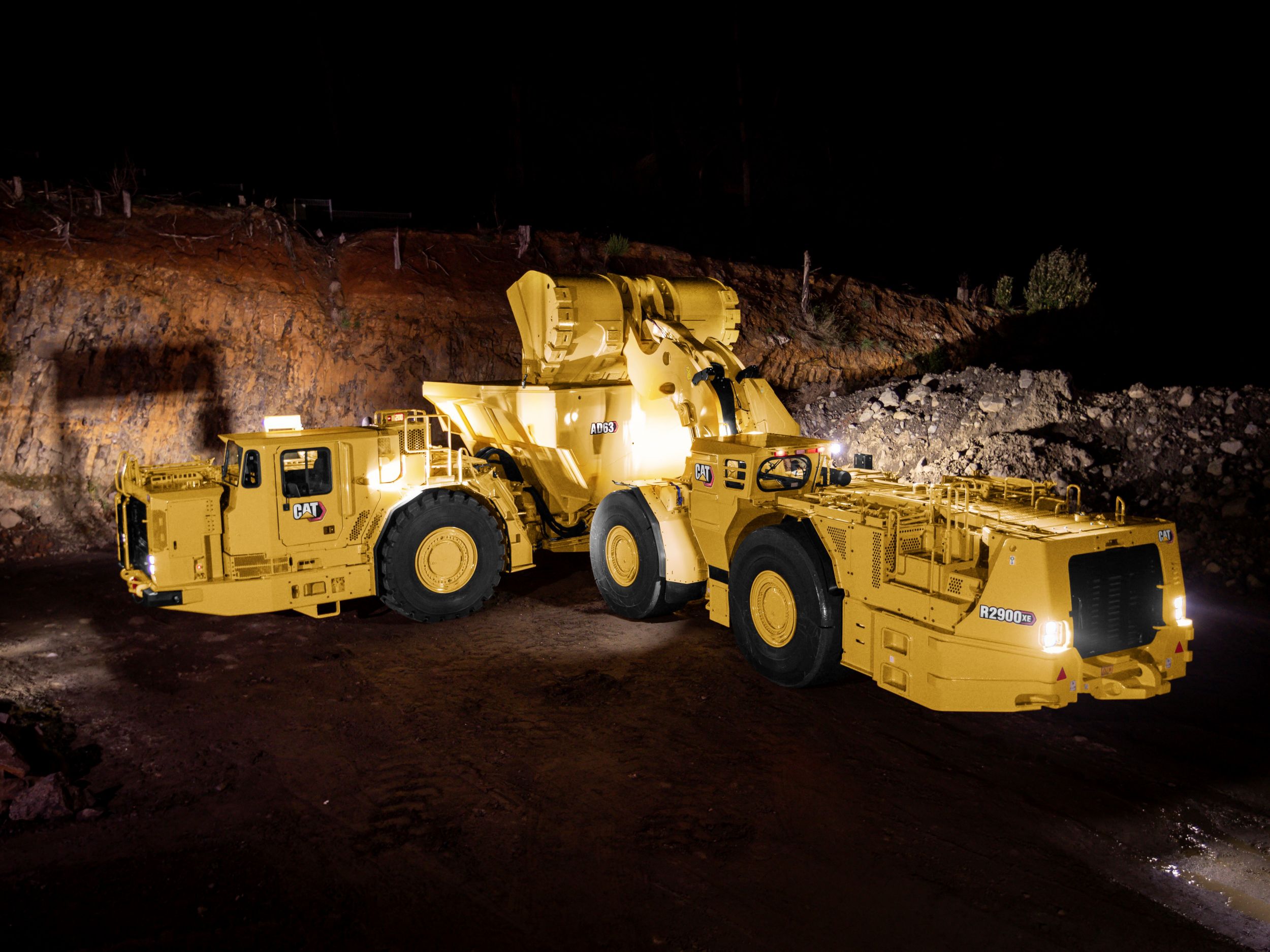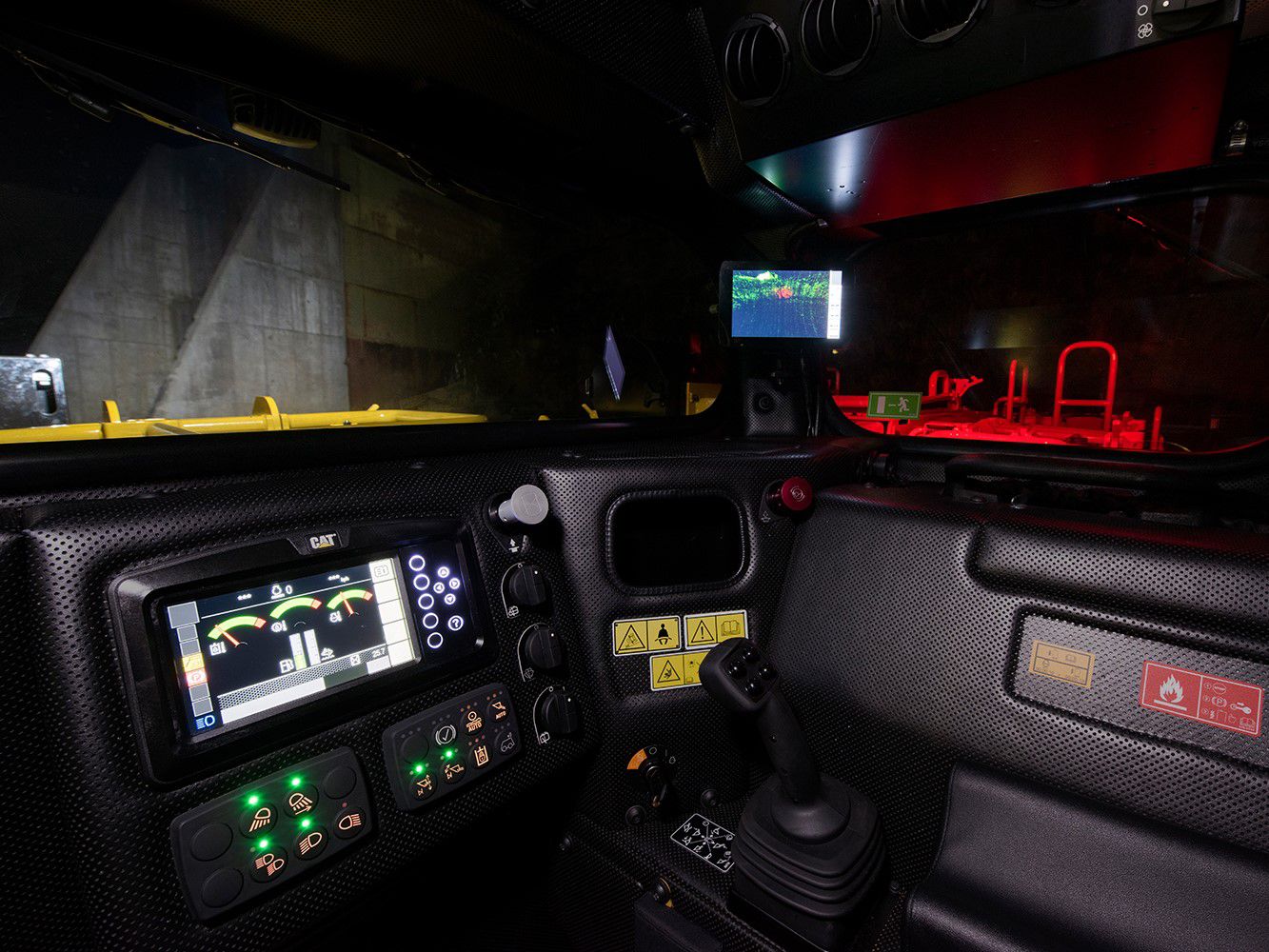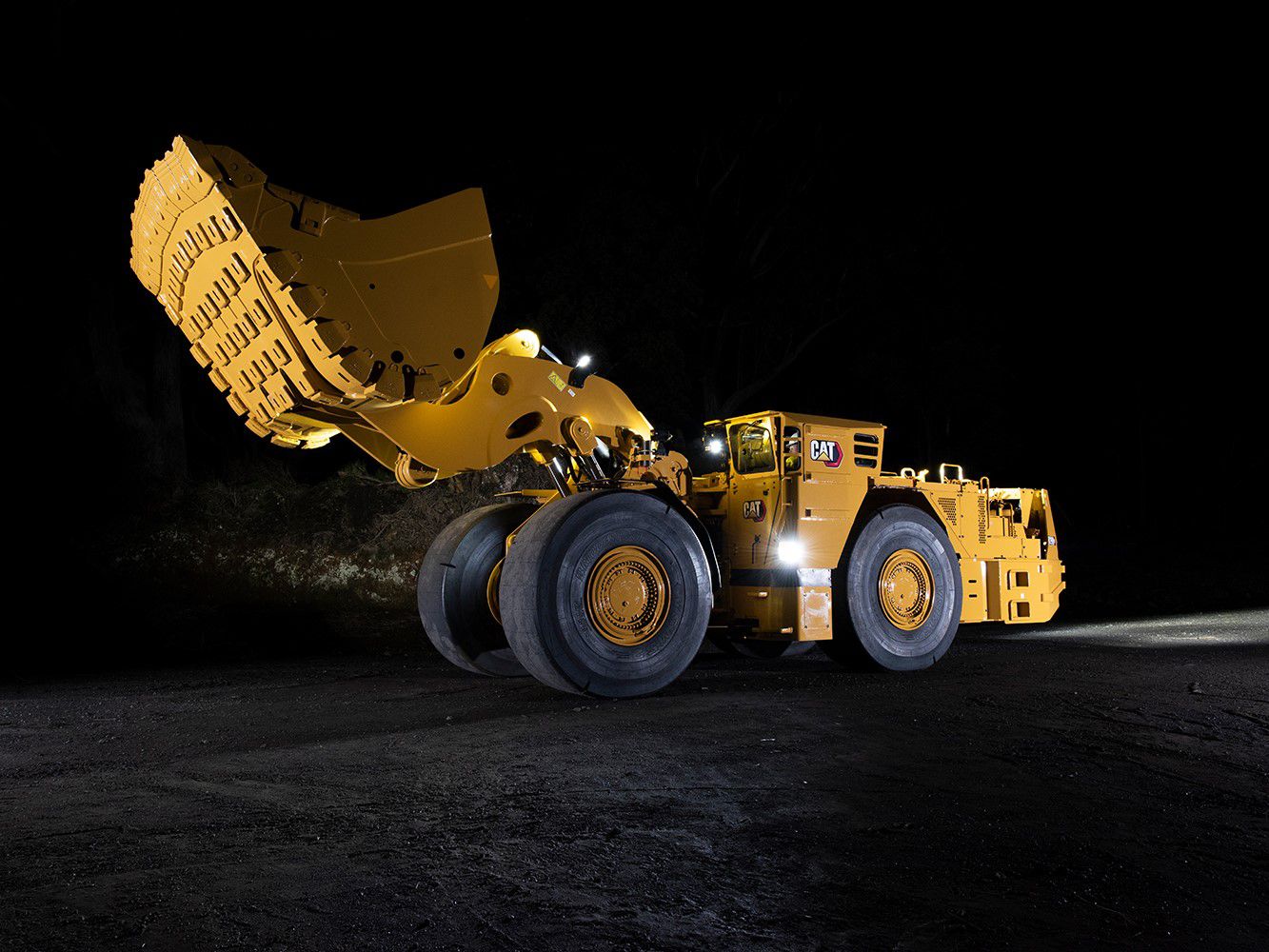

Sign In
Welcome! Sign In to personalize your Cat.com experience
If you already have an existing account with another Cat App, you can use the same account to sign in here
Register Now
One Account. All of Cat.
Your Caterpillar account is the single account you use to log in to select services and applications we offer. Shop for parts and machines online, manage your fleet, go mobile, and more.
Account Information
Site Settings
Security
The Evolution of a Workhorse
Gordon Wilkin, Caterpillar, Inc., reviews the evolution of the CAT® R2900: an LHD on the verge of celebrating 30 years since its first introduction to the mining industry.
Originally Published in Global Mining Review | March, 2024
Replacing the originally designed large load-haul-dump (LHD) 2600 machine, which was closely followed by the successful R2800, the Cat® R2900 model series was first produced in December 1994 and made its debut at the 1995 AIMEX mining show in Sydney, Australia. It has enjoyed a rich history of efficient production spanning nearly three decades. The largest of the four LHD models, the R2900, increased rated payload to 17.2 t, 1 t higher than the R2800. At the time, this met mining operations’ needs for increased productivity to reduce the cost per tonne of ore mined. At mine sites in Australia, initial machines impressed operators with improved visibility that addressed left-hand-side blind spot issues common with other models.
Throughout the years, the R2900 series has remained the workhorse of the Caterpillar LHD line, with design updates making only minor changes to many of the productivity specifications such as payload, bucket size options, and breakout force. Much of the effort focused on reducing exhaust emissions to improve underground air quality. Roughly a decade after the series introduction, the R2900G model was introduced in 2005 with both ventilation reduction (VR) system and EU Stage IIIA/US EPA Tier 3 engine packages. The former offered the optional use of flow through or highly efficient wall flow diesel particulate filters to improve underground air quality.

With commercial availability of the new Cat R2900 model in 2019, Caterpillar added an EU Stage V/US EPA Tier 4 Final engine option for markets adhering to higher emissions regulation standards. It introduced the Cat Clean Emissions Module to the LHD for limiting both particulate matter and NOx to near zero. Technology also played an integral role in machine design with Product Link™ Elite enabling machine health monitoring through the in-cab display and making it easier to share data across multiple destinations. Remote machine operation was also introduced with the early R2900’s to increase operator safety. The scalable remote technology includes the Cat line-of-sight console with other Cat MineStar™ Command technology options to make it possible for tele-remote and semi-autonomous operation from a distant operator station.
Sea change with the R2900 XE
With a markedly different design, the new Cat R2900 XE, introduced mid-year 2023, serves as Caterpillar’s next evolutionary step in pushing the boundaries of loader performance and efficiency. The company’s first diesel electric LHD model meets today’s mining industry’s needs for bigger payloads, faster loading, and reduced emissions. It features optimised lift arm and component geometry, plus load-sensing hydraulics to elevate lift breakout force to 32 500 kg and calculated tilt breakout force to 42 000 kg, an overall 35% improvement in breakout force from the R2900G.
Moreover, the new LHD includes many operator and technician enhancements designed to improve safety and productivity. Its field-proven switch reluctance (SR) electric drive system with continuously variable speed control provides 52% quicker acceleration and improved machine response over the R2900G. With no driveline or powertrain shock loads, it offers smooth directional changes and increased power train component life. Automatic retarding controls maintain speed on grade, and the anti-rollback feature also prevents coasting in neutral. With no transmission or torque converter, the R2900 XE features lower hydrocarbon emissions and offers a reduction in fluids that require regular servicing. Service intervals for the Cat C15 engine have been increased to 500 hours. Together with lower heat generation, there is a reduction in service parts required and stoppages for servicing.

At 18.5 t payload, the R2900 XE’s 1.3 t higher payload than the R2900G delivers faster load cycle times and provides a three to four-pass match to the 63 t Cat AD63 underground mining truck. Both models offer a variety of capacity options to match mine site conditions. Productivity for the R2900 XE averages in excess of 20% higher compared to its predecessor. The new Cat underground LHD model comes from the factory equipped ready for a broader range of Cat MineStar solutions than the R2900G. Mine sites can now choose from a wide array of technologies like Detect, Fleet, Health, and Command for underground that enable remote operation ranging from line-of-sight to full autonomy. Additionally, new Autodig technology optimises loading by automating crucial parts of the digging cycle.
The R2900 XE shares parts and components with the previous R2900G model and the industry proven Cat 988 XE large wheel loader. Many of the safety and technology advancements are also shared with many other models from the broad range of Cat equipment, allowing the local dealer to continue to provide support, service, and parts to the new R2900 XE.

Proving the claims
A six-month, Caterpillar-conducted study of the new R2900 XE followed the unit more than 1500 operating hours to compare its performance to that of the mine site’s existing fleet of five R2900G units. The R2900 XE was equipped with an 18.5 t rated bucket, and the R2900Gs were equipped with 17.2 t rated buckets.
Field follow data showed a 34% average fuel consumption reduction with the R2900 XE, primarily due to its SR electric drive system and hydraulic piston pumps. The new R2900 XE also offered 54.9% lower CO emissions at high idle, while NOx emissions were 34% and 42.1% lower at idle and high idle, respectively. Diesel particulate matter was lowered by 99.99%, comparing the R2900 XE EU Stage V/US EPA Tier 4 Final engine to the Tier 2 of the R2900G.
Lower CO and NOx emissions data demonstrated an improved working environment for personnel at the mine using the R2900 XE. Beyond reduced exhaust emissions, a 7 – 11°C reduction in working area temperatures were recorded. At the same time, the R2900 XE operates quieter and reduces exposure to vibration levels compared to its predecessor.
The new R2900 XE offers an impressive reduction in tyre wear, which Caterpillar attributes to the new traction control system design. Traction control reduces tyre spin in difficult underfoot conditions to improve productivity, increase tyre life, and reduce consumable costs.
The R2900 XE, with its higher bucket capacity, provided a 101.6% increase in tonne-per-hour productivity on a duty cycle pulling material from the same loading source to destination. The field follow results also demonstrated a 20% increase in lift capacity over the mine’s current LHD models, and the R2900 XE delivered three-pass loading – compared to the R2900G’s four passes – of the mine’s AD60 and AD63 trucks, equipped with the mine’s preferred body size.
Compared to the R3000H
At another Australian underground mine, Caterpillar evaluated the performance of the R2900 XE against the Cat R3000H. The performance and payload study included the same draw points measured in the field follow for each loader, and material was dumped at the same tipping location at the mine’s underground crusher.
The R3000H offers a rated payload of 20 t, today the largest LHD in the Cat line, and was equipped with a 10.5 m3 bucket. The smaller R2900 XE’s rating is 18.5 t, and it was fitted with a Cat 9.2 m3 bucket for the study. Even with the smaller bucket and rated payload, the R2900 XE outperformed the larger loader as anticipated by Caterpillar. The reasoning behind its higher productivity was in part due to the R2900 XE filling its bucket 15% faster, in just 11 seconds. Additionally, the new LHD clocked a much faster fully loaded acceleration speed with its electric drive system compared to the R3000H, delivering faster cycle times.
On top of offering higher productivity, the R2900 XE burned 13% less fuel than the R3000H over the same application. This equated to a 12% better t/l of fuel productivity result. The mine site plans to equip its future R2900 XEs with a 9.8 m3 bucket. Using the larger bucket, the mine could realise a potential extra 6% increase in productivity gains compared to using the 9.2 m3 bucket.


Against competitive LHDs
A third Australian study pitted the R2900 XE against a competitive LHD model with a published rated payload just over 17 t. The study’s objective was to clear the same amount of material from the same specified area.
The R2900 XE cleared the area in 20 buckets compared to the competitive LHD’s 24 buckets, was 17% faster in clearing the development, and loaded the haul trucks faster. Plus, the measured operating heat generated by the R2900 XE was 7.1°C lower on level ground and 11°C lower on the decline than the competitive LHD.
In comparative working conditions, the R2900 XE had an 8% lower fuel burn rate than the competitive LHD, saving on fuel costs. The R2900 XE also delivered a 20% faster average cycle time on level ground and a 23% average cycle time advantage when travelling down the decline, compared with the competitive model.
Conclusion
Caterpillar acknowledges that the performance statistics documented can vary over applications. However, these studies show the R2900 XE has exceeded its design targets and is proving those results in the field against its R2900G predecessor, larger LHD models, and other OEMs. The Caterpillar designed, integrated, validated, and supported SR electric drive system not only offers a significant improvement in performance and productivity, but also advancements in safety, improved greenhouse gas emissions, carbon footprint reduction, and other emissions reductions.
GET THE LATEST FROM CATERPILLAR MINING DELIVERED RIGHT TO YOUR INBOX
